Must a large inventory of electronic components be a good thing?
Too many things will multiply into many problems - inventory just belongs to this category. Accountants treat finished products, work in progress, parts and raw materials as assets, and cash and accounts receivable as assets. Not many CEOs describe inventory directly. They prefer a more nuanced inventory view, depending on which supplier has a stable product at any time in the supply chain.

However, for observers of industry history, inventory can be a huge responsibility. In terms of this condition, we suggest that the fewer your company, the better. Driven by their professional requirements, CFOs in the electronics industry regularly discuss with accounting colleagues to classify inventory as assets on the company's balance sheet. However, during the discussion, the CFO of electronic products knew that there were problems in the market Negative meaning. They may be fired because they have too much cash on their balance sheets, but this is far from the torrent of financial analysts asking about inventory.
Most people's views on inventory can be summarized in this way. When demand is strong and matches (or even exceeds) supply, large inventory is good. Due to excessive demand, it is also good to sell inventory at a premium. However, when demand is low, there are too many stocks. They often take measures to drive down prices, erode profit margins and lead to cost cuts. This may include shutting down production facilities. In other words, marketable inventory is good, they are assets. Too much inventory is bad. They have risks and responsibilities.
accounting Or industry executives so that we can avoid arguing about right and wrong. The more important thing about inventory is the realization of balance in the supply chain. Of course, this is the most elusive, but as Brian Krzanich, chief executive of Intel, said in a recent conference call with financial analysts, everyone is trying to balance the company's inventory and the total amount in the supply chain.
"Our inventory levels are healthy and we are entering a more seasonal sales season," korzanich said. "It feels like we are in a balance between risks and opportunities.
Everyone should be happy to find the right inventory for your products. Should that be the end of the matter? Unfortunately, this is not the case. Determining how many products (whether finished products or raw materials) the company should provide in what form is an art in itself, and few companies can be absolutely right. In fact, the iterative history of the electronics industry shows that few people can determine the best inventory level to maintain. Even the largest research companies that track the industry often fail to provide accurate product forecasts.
In the semiconductor industry association, SIA and world semiconductor trade statistics are updated and released almost every quarter, that is, upward or downward revised forecasts. For example, earlier this year, SIA predicted that global chip sales in 2015 would increase by 3.4% from US $335.8 billion in 2014 to US $347.3 billion. In late August, WSTS, which compiles data for SIA, lowered these figures after looking at the actual sales data for the second quarter.WSTS now believes that semiconductor sales will reach $343 billion in 2015, an increase of only 2.3%. These figures will certainly change again by the end of this year. Lower figures have forced many chip manufacturers to cut their sales expectations because it is clear that they must reduce production to avoid sluggish inventories of unsold parts at the end of the year.
Don't put pressure on these organizations and company executives. In today's unpredictable economic environment, it is very difficult to predict demand. The low visibility of end customer demand and continued weakness in some parts of the world mean that the company's forecasts will be based on weak or even wrong information.Inaccurate predictions can be very costly. This means that companies must work harder to balance demand and establish the right mechanism to manage unexpected changes in market conditions. A company needs to sell less products than the needs of customers, which may not only lose the related sales in a specific period, but also lose the trust and patronage of key customers.
However, not all companies in the e-supply chain believe that large inventories should be avoided. Some enterprises are proud to have inventory at any time. Their value proposition is different. Many of them will keep large inventory for a long time, just to ensure that customers can use components when needed.
as Suppliers or distributors like Shenglan are ready at any time prepare It is easy for purchasing managers and design engineers to have OEM required parts. They won't make it possible Eliminate unused Instead of worrying about parts, you can focus on optimizing the production system. Companies that guarantee inventory treat a large amount of inventory as an asset. This is the key value they bring to suppliers and customers. They risk the right sales opportunity.


